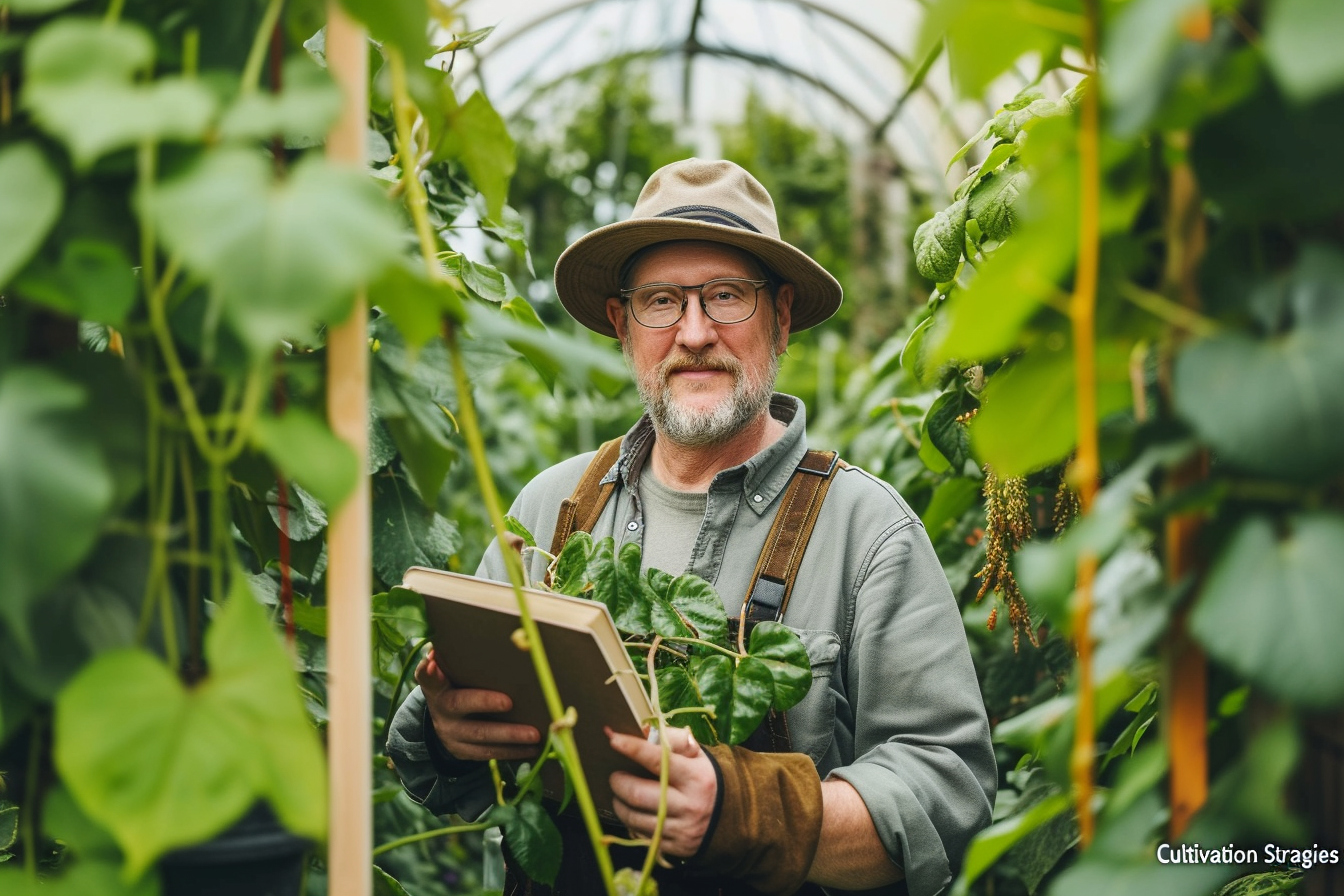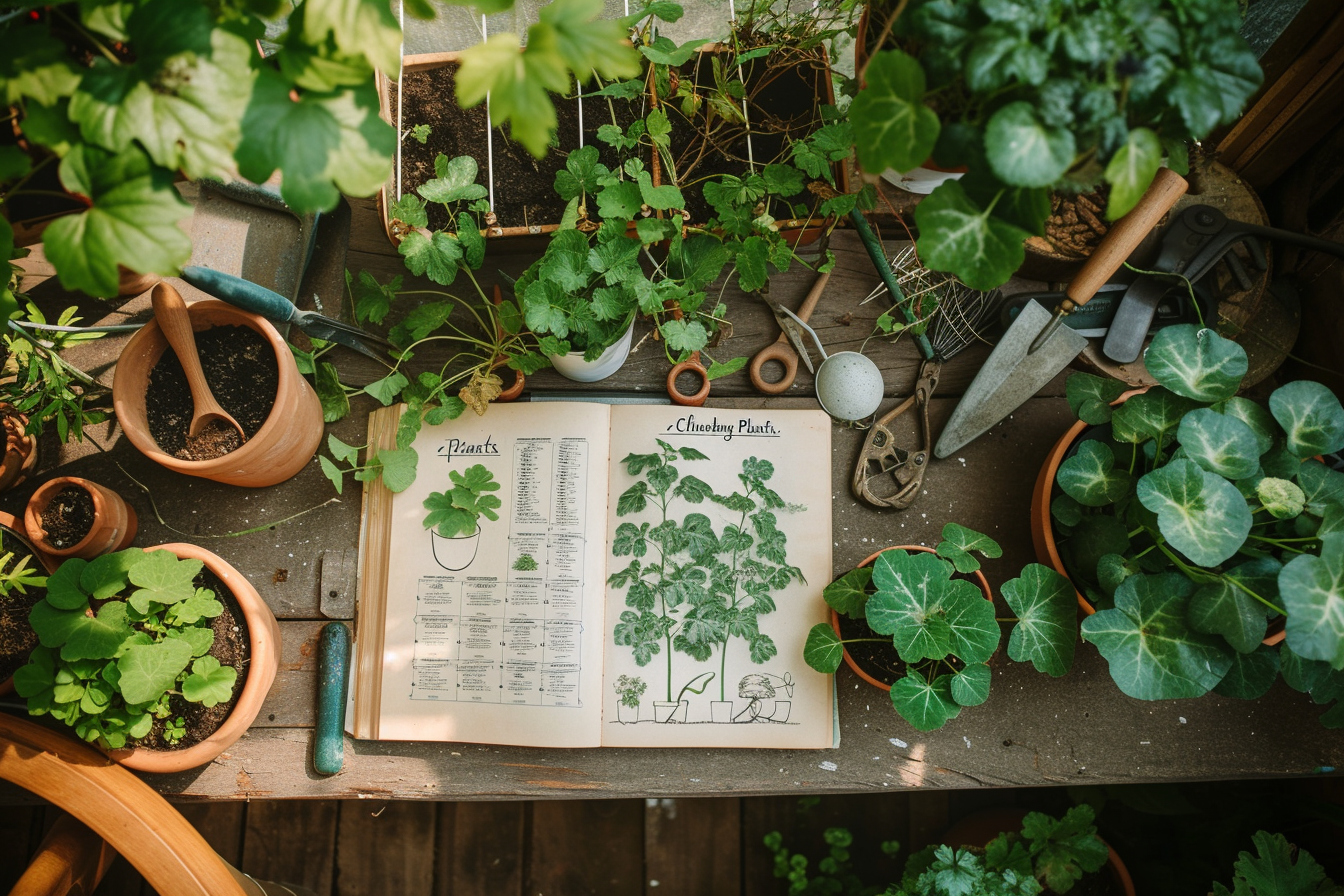Growing climbing plants can be a deeply rewarding endeavor that transforms garden spaces into lush, vertical vistas. Climbers, with their ability to ascend trellises, walls, and other structures, offer a dynamic layer of beauty and interest in any landscape. In this detailed exploration, we will unveil top strategies for cultivating thriving climbing plants, ensuring your garden reaches new heights of vitality and splendor.
Selecting the right climbers for your garden
Choice Matters: The first step in successful cultivation is the selection of suitable climbing plants for your specific environment and aesthetic goals. This decision is critical, as climbers significantly differ in their requirements and capabilities. Understanding hardiness zones, sunlight preferences, and the inherent growth patterns of different species will ensure you choose climbers that are not only beautiful but also well-adapted to your garden’s conditions.
Understand plant hardiness
Zonal Wisdom: Each climber thrives within certain temperature ranges, denoted by “hardiness zones.” Selecting plants matched to your climate’s zone increases the likelihood of survival and flourishing growth. Refer to regional hardiness maps and opt for climbers that are rated for your zone or even one zone colder for added resilience.
Sunlight and shade considerations
Lighting the Way: Climbing plants have varying needs when it comes to sunlight. Some, like wisteria and clematis, are sun worshippers requiring ample daily exposure, while others, such as ivy, can prosper in shadier spots. Assess the lighting conditions of your intended planting area and choose species that will thrive in that environment.
Planting and soil preparation
Foundation for Success: Soil preparation lays the groundwork for a successful climbing plant garden. Most climbers prefer well-draining soil rich in organic matter. Amending your planting site with compost or well-rotted manure will provide the nutrients necessary for vigorous growth. Test your soil’s pH and adjust accordingly, as certain climbers have specific pH preferences.
Strategic planting
Room to Rise: Providing ample space for root development is just as important as the vertical space climbers will eventually occupy. Plant climbers at the same depth they were in their pots, spacing them appropriately to prevent overcrowding and to promote good air circulation, further bolstering plant health.
Support structures
Climbing High: The allure of climbing plants lies in their ability to cover vertical spaces, creating a living tapestry. As such, investing in the right support structures is essential. Trellises, arbors, and pergolas should not only complement your garden’s aesthetics but also be sturdy enough to withstand the weight of mature plants. For self-clinging climbers, ensure that walls and fences are in good repair and that the materials used will not be damaged by the plant’s growth mechanisms.
Training for elevation
Guiding Growth: Training climbing plants early on steers their growth in the desired direction and helps prevent damage to both the plant and the support structure. Tie in shoots loosely to trellises or wires using soft ties; avoid restricting growth with overly tight bindings. Regularly monitor and adjust the ties as the plant grows.
Pruning and maintenance
Shape and Health: Pruning not only maintains the desired shape of your climbing plants but also encourages fresh growth and flowering. Familiarize yourself with the specific pruning requirements for each type of climber. While some, like climbing roses, need annual hard pruning to promote new shoots, others may only require the occasional trim to remove dead or diseased growth.
Attentive care
Observation and Action: Routine inspections of your climbers can preempt issues before they become problems. Watch for signs of pests, diseases, and nutrient deficiencies. Swift action, such as applying organic pest control measures or foliar feeds, can restore plant health. Consistent watering, especially during dry spells, is important, but avoid overwatering which can lead to root rot.
Timing and patience
Seasonal Adjustments: Climbers grow and respond to care differently across the seasons. In spring, focus on feeding and supporting new growth. Summer is the time for diligent watering and enjoying the blooms. Fall may require preparations for winter, while in winter, plants should be left undisturbed as they enter dormancy.
Embrace the climb
Gardening as a Journey: Remember, gardening is a process of continual learning and adjustment. Your climbing plants will have their own unique growing patterns and needs. Embrace this journey, and adjust your care strategies to the rhythms and responses of your plants over seasons and years.
Combining aesthetics and ecological benefit
Design with Purpose: While aesthetics are often a primary concern, integrating ecological considerations into your climbing plant selections can enhance local biodiversity. Opt for native species that provide habitat and food sources for local wildlife. Integrating flowering climbers can attract pollinators such as bees and butterflies, contributing to the health of the ecosystem.
Harmonizing with the landscape
Natural Integration: Climbing plants can be utilized to soften architectural features, create privacy screens, or establish boundaries in a natural and visually pleasing way. When selecting climbers, consider how they will mature and intertwine with the existing landscape. A harmonious combination of climbers can result in a garden that looks and feels like a natural extension of its surrounding environment.
Expert recommendations

For those seeking additional insights or facing specific challenges with their climbing plants, consulting local horticulturists or joining gardening communities can yield valuable tips and advice tailored to individual situations. Sharing experiences with fellow gardeners can often open new avenues for learning and growth in your horticultural pursuits.
Innovating garden spaces
Pushing Boundaries: Do not be afraid to experiment with new approaches and unconventional uses for climbing plants. Vertical gardening is an innovative practice that allows for high-density planting in small spaces. Exploring the use of climbers in such contexts can not only make the most of limited areas but also create striking and unique garden features.
Adapting and Evolving: As your climbing plants grow and evolve, so too should your gardening techniques. Stay proactive in seeking out new information, resources, and technologies that will help you enhance the growth and beauty of your climbers.
In the grand tapestry of horticulture, climbing plants offer a vertical dimension of beauty and possibility. With the proper knowledge and care, these vining wonders can transform ordinary spaces into spectacular living works of art. Through attentive cultivation and an adventurous spirit, your garden will become a testament to the wonders of climbing plant cultivation.
